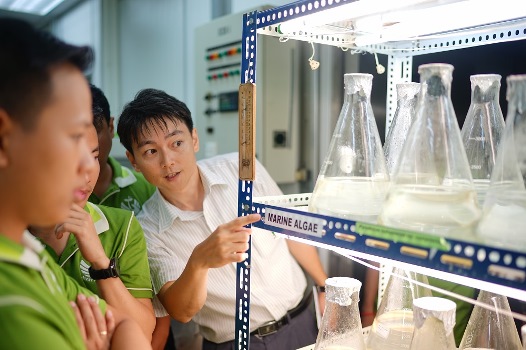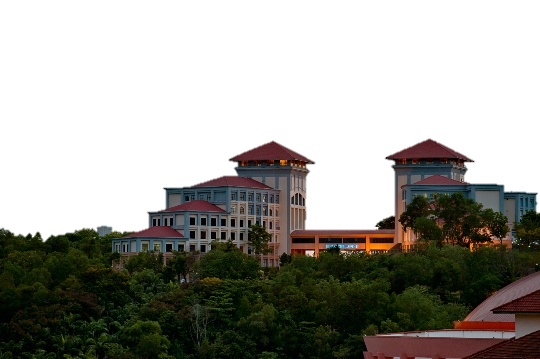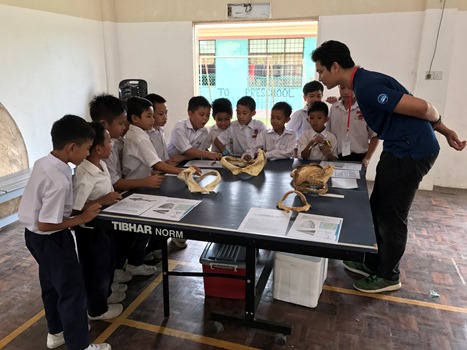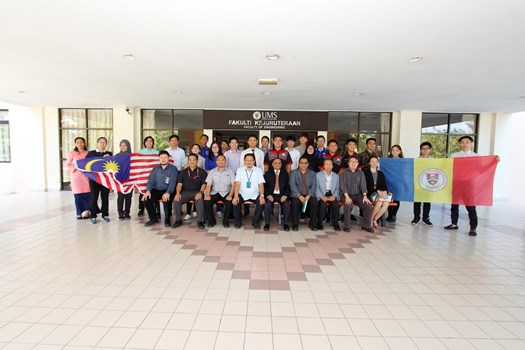 TUESDAY, 07 AUGUST - Impaired water quality is a global issue. It is in fact a growing problem especially when there is proof of limited resources for drinking, domestic use as well as harming the ecosystems.
TUESDAY, 07 AUGUST - Impaired water quality is a global issue. It is in fact a growing problem especially when there is proof of limited resources for drinking, domestic use as well as harming the ecosystems.
According to Associate Professor Dr. Teruaki Yoshida the Head of the Unit for Harmful Algal Bloom Studies (UHABS), Borneo Marine Research Institute, Universiti Malaysia Sabah; the data findings from the water samples collected over a plankton survey at Likas Bay show high dominance of a single phytoplankton species - Protoperidinium.
“Water impairment often affects marine biodiversity. Eutrophication of the water exerts pressure on phytoplankton populations allowing the intensive growth of certain harmful-toxin producing species or nuisance blooms that may create problems in the ecosystem and public health."
“When there is a single phytoplankton species dominating in an area, it may indicate deterioration in the water quality,” he revealed the findings during the presentation of the Plankton Survey for the Sustaining Kota Kinabalu’s Marine Heritage project - a joint marine conservation project between Universiti Malaysia Sabah and Sutera Harbour Resort, here on Friday.
Dr. Teruaki further stated that it is imperative for people not to increase the release of nutrients in the water.
“Excessive nutrient input into the sea is known to trigger phytoplankton blooms. The sources of nutrients are usually derived from coastal human activities and from agricultural and industrial wastes,” he said.
When asked the level of water quality in Likas Bay, Dr. Teruaki said more studies need to be done.
“To evaluate the present water condition in Likas Bay, it is essential to monitor the changes in environmental variables and indicator species over a certain period before any concrete judgement can be made,” he said.
He also said that the water quality will further deteriorate if there are no improvements of wastewater treatment systems.
“The responsibility by the government to improve our wastewater treatment system is important.
“The discharge of inadequately treated wastewater may cause adverse impacts such as water pollutions, spread of waterborne diseases, decrease in tourism potential; just to name a few,” he said.
Likas Bay has become a popular recreational beach after a vast area of Tanjung Aru Beach has been temporarily closed for a planned development.



 TUESDAY, 31 JULY 2018 - An Accounting Research Seminar was organised by Accounting Centre, Faculty of Business, Economics and Accountancy (FPEP), Universiti Malaysia Sabah (UMS) with the objective to provide an avenue for UMS academic staff in the accounting field to present output from completed and on-going research.
TUESDAY, 31 JULY 2018 - An Accounting Research Seminar was organised by Accounting Centre, Faculty of Business, Economics and Accountancy (FPEP), Universiti Malaysia Sabah (UMS) with the objective to provide an avenue for UMS academic staff in the accounting field to present output from completed and on-going research. TUESDAY, 31 JULY - Social media was abuzz in the first week of July (2018) with yet appalling news of a dead Whale Shark reportedly accidentally caught in a fisherman’s net.
TUESDAY, 31 JULY - Social media was abuzz in the first week of July (2018) with yet appalling news of a dead Whale Shark reportedly accidentally caught in a fisherman’s net. The announcement by the Minister of Education, Dr. Maszlee Malik, that he plans to focus on “increasing the number of students with multi-language skills” (NST, 22/05/2018
The announcement by the Minister of Education, Dr. Maszlee Malik, that he plans to focus on “increasing the number of students with multi-language skills” (NST, 22/05/2018 MONDAY, 9 JULY- Industrial Training is a compulsory 5-credit hour course for the students who have completed their six (6) semesters of study in the Faculty of Engineering, Universiti Malaysia Sabah (FKJ, UMS).
MONDAY, 9 JULY- Industrial Training is a compulsory 5-credit hour course for the students who have completed their six (6) semesters of study in the Faculty of Engineering, Universiti Malaysia Sabah (FKJ, UMS).